How to put meters for heating in an apartment: installing individual appliances
It is impossible to live in unheated rooms in winter and no one argues with this. Hot radiators in the cold months are a communal good of modern life. However, the bills regularly charged by heating experts are often overpriced, aren't they?
You decided to figure out how to put meters for heating in the apartment to get a real chance not to pay too much, but don’t know where to start?
We will help to study this issue in detail - the article describes the procedure for installing the meter and the owner’s interaction with the heat supply organization. The main types of counters and their features are also considered.
The material of the article is supplemented by thematic photos and useful video tips of the owners, who through the court proved their right to pay only for the heat actually consumed.
The content of the article:
- Purpose of installing a meter for heating
- Monthly payments for someone else's living space
- Types of wiring of an apartment heating system
- Features of the main types of meters
- The legal installation of the heat meter
- When is installation impossible or disadvantageous?
- Conclusions and useful video on the topic
Purpose of installing a meter for heating
It is expensive to heat a house. But private homeowners at least have a choice of boiler equipment and fuel. Residents of high-rise buildings have no choice - central heating with tariffs set by the management company.
However, there is a tool to reduce the cost of heating an apartment - an individual heat meter.
When there is no high-quality heating, it happens that malfunctions of the home heating system force one to look for alternative sources of heat.
Or the reason for the coldened room radiators is the intention of the Housing Office management to save on common house heating costs.
Then the plumber tightens the valve of the stop valves, reducing the flow of hot water in the heating system of a high-rise building. Residents freeze and get warm heatersby increasing electricity bills. But the cost of heating does not decrease from this.
Do you also have to freeze in your apartment? We offer you to see information about insulation of the walls of the apartmentconsidered in our other article.
When there is too much heat, the superheated air in the rooms is unpleasant; you have to open the window to lower the general temperature level. But behind the seemingly simple methods are the money spent on “street heating”.
You can save them by installing regulators for heating batteries and heat meter - to the heating circuit of the apartment.
You may also be interested in information about comfortable room temperature, which you can read about. in this article.
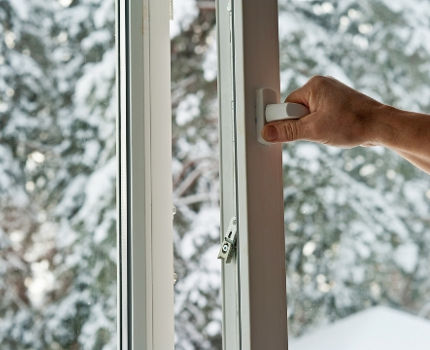
There are still hidden components of payments for heating. This is when the coolant enters the mains with one heating temperature from the boiler room, but at the input of the heating pipes to the houses its temperature is different, lower.
The delivery of coolant through pipes is accompanied by heat loss due to poor insulation, this is understandable. But these heat losses are paid by the final consumer - owners of apartments in high-rise buildings that are not equipped with heat meters.
Monthly payments for someone else's living space
Each apartment building should be equipped with a heat meter - Article 13, paragraph 5 of Federal Law No. 261-FZ of 11/23/2009.
The management company fulfills this condition and, based on the results of each month, removes heat consumption for the high-rise building under its jurisdiction.
The amount for thermal energy is simply divided between the apartments according to their living area. Although this approach cannot be fair.
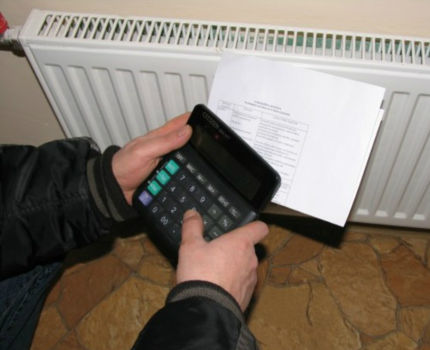
The data on housing available in the Criminal Code are based on the technical passport of each apartment. However, in such data sheets, data on apartment redevelopments that increase the heating area are often not taken into account.
There is no information about the increase in the connection points of heating radiators.
Meanwhile, apartments with redevelopment and with an expanded number of heating appliances consume more heat than others.
And since the total energy consumption of thermal energy is divided by the passport housing, the residents of “ordinary” apartments pay for the heat consumed by the residents of the “improved” apartments.

A simple way out of the situation with the payment of someone else's heat - individual meters on the heating circuits of apartments.
The cost savings for thermal energy, the consumption of which is determined by the heat meter, will be more than 30% of previous payments for heating, tied to the size of the living space (normative).
Types of wiring of an apartment heating system
Apartments in high-rise buildings are equipped with either vertical or horizontal wiring of the heating system. In apartment buildings built before the beginning of the 21st century, heating systems were bred vertically.
Option # 1 - Vertical Wiring
The vertical circuit of the thermal system is single-pipe, less often double-pipe. But always with a sequential run of coolants along the interfloor levels - from bottom to top, then from top to bottom.
Especially vertical distribution of heating is common in Khrushchev.
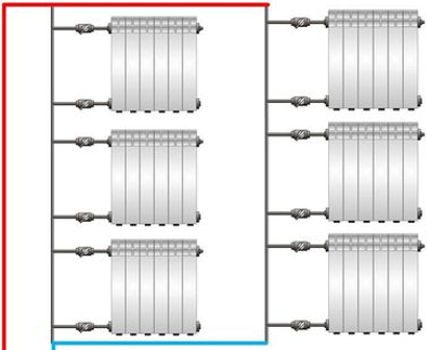
Vertical heating has serious drawbacks:
- Uneven heat distribution. The coolant is pumped along a vertically oriented interfloor circuit, which does not provide uniform heating of the rooms at different levels. Those. in apartments of lower floors it will be noticeably warmer than in rooms located closer to the roof of a high-rise building;
- Hard heat setting heating batteries. The need to equip each battery with a bypass;
- Problems balancing the heating system. The balance of single-circuit heating of the vertical wiring is achieved by setting the shut-off valves and thermostats. But at the slightest change in pressure or temperature in the system, you have to perform the adjustment again;
- Difficulties with individual heat consumption. There are more than one risers in the vertical heating system of the rooms of the apartment, so ordinary heat meters can not be applied. They will require several - for each radiator, which is expensive. Although for heating vertical wiring, another heat metering tool is available - the heat distributor.
The construction of a vertically oriented heating pipeline scheme was cheaper than horizontal wiring — fewer pipes were required.
Such savings in the era of mass typical development of urban areas of Russia in the XX century were considered quite justified.
Option # 2 - horizontal wiring in a high-rise building
With horizontal wiring of the heating system, there is also a vertical supply riser that distributes the coolant to the floors.
The pipe of the second riser, which serves as the return line, is located in a vertical technical shaft near the supply riser.
From both distribution risers, the horizontal pipes of two circuits - supply and return - are led out to the apartments. The return line collects the cooled water, transporting it to the heating station or boiler.
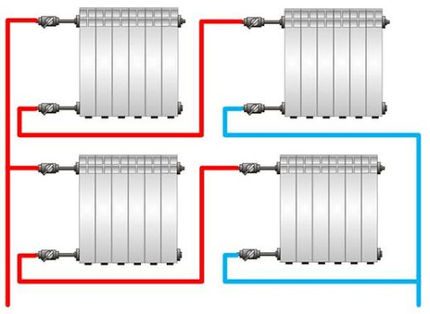
The advantages of horizontal wiring of heating pipes include:
- the ability to adjust the temperature in each apartment, as well as throughout the highway (installation of mixing units is necessary);
- repair or maintenance on a separate circuit heating without a complete shutdown of the heating system. Shutoff valves allows you to block the contour of the apartment at any time;
- quick start of heating on all floors. For comparison, even in a well-balanced single-pipe vertical wiring system, delivery of the coolant to all radiators will take at least 30-50 seconds;
- installation of one heat meter on an apartment circuit. With horizontal heating distribution, its equipment with a heat meter is a simple task.
The disadvantage of a horizontal heating circuit is its increased cost. The need to install the return pipe parallel to the supply pipe increases the price of apartment heating by 15-20%.
Features of the main types of meters
A group of individual heat energy meters is designed to operate in heating networks with 15-20 mm pipe channel diameter and a coolant volume in the range of 0.6-2.5 cubic meters per hour.
Calculations of the consumed heat energy are performed by heat meters and heat distributors independently, with the output of data on an electronic display.
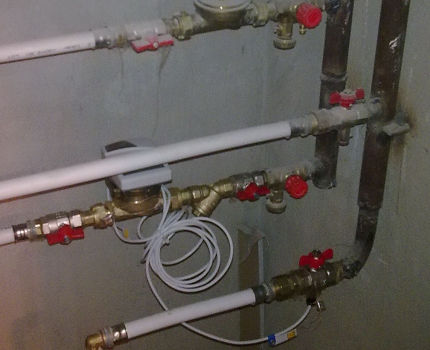
The computing module of the device determines the amount of heat consumption for a given period of time (hour, day or month), storing and storing this information in the device’s memory for 12-36 months.
The most convenient installation of a non-volatile meter for heating (i.e. with an additional power source - a battery).
Depending on the model of the heat meter, the values of its measurements are displayed as kilowatts per hour, megawatts per hour, gigajoules or gigacalories. For managers and other utility companies, heat readings in Gcal are required.
For conversion in gigacalories, you must apply the appropriate translation formula. For example, for kilowatts per hour - multiply the value by a factor of 0,0008598.
Each meter is a complex of several instruments. Its set may include temperature sensors, calculators of the volume of consumed thermal energy, as well as pressure, flow and resistance converters.
The exact equipment of the heat meter is set by the manufacturer for a specific model.

Depending on the principle of accounting for the consumed heat energy, heat meters are equipped with an ultrasonic or mechanical (tachometric) flow meter.
Models of devices with flowmeters of other types (for example, vortex or electromagnetic) are also available, but they are poorly distributed. Heat meters are designed to collect information on heat consumption exclusively on the horizontal wiring of the heating circuit.
A separate group of heat meters are calculators and heat distributors that do not require a tie-in to the heating circuit. These devices are used to calculate the heat consumption of heating radiators for any heating circuit schemes.
Type # 1 - mechanical version of the flowmeter
The simplest type of design, so the cheapest (about 9000-10000 rubles) is a device with two wire temperature sensors, a water meter and an electronic calculator unit.
The main working element of the meter is the part (impeller, turbine or screw) that rotates when the coolant passes through the device. The number of rotations determines the amount of coolant that has passed through the meter.
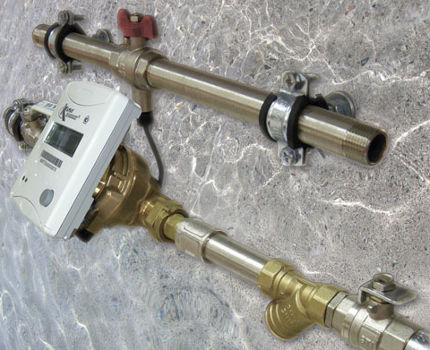
Contact thermometers are built into the supply and return pipes of the heating circuit of the apartment. The first thermometer is located in the counter, in a special socket.
The second is installed on the return pipe, in a ball valve of a special design (with a socket) or in a tee equipped with a sleeve for a thermometer.
The advantages of mechanical heat meters:
- the cost of about 8000 rubles .;
- the design is simple and reliable;
- no external power required;
Attracts a fairly correct stability of indicators and the permissibility of installation in a horizontal or vertical position.
Cons of mechanical type heat meters:
- guaranteed work period not more than 4-5 years - every 4 years, verification is required;
- high wear of rotating parts - however, all mechanical meters are repaired for little money;
- pressure increase - a rotating element helps to increase the pressure in the heating circuit;
- susceptibility to water hammer;
- high demand for matching actual flow rate in the heating system, the nominal flow rate set by the manufacturer.
It is imperative to integrate into the circuit a coarse magnetic strainer in front of a mechanical heat meter. The device is extremely sensitive to the content of mechanical suspensions in the coolant volume!
Type # 2 - Ultrasonic Heat Meter
The flow rate of the coolant, these devices are determined using the ultrasonic signal emitted by the emitter and received by the receiver.
Both elements of the thermal ultrasonic meter are mounted on a horizontal heating pipe, a certain distance is established between them.
The signal from the emitter follows the flow of the coolant and reaches the receiver after a period of time, depending on the speed of the coolant in the heating circuit. Based on the time data, the flow rate of the coolant is set.
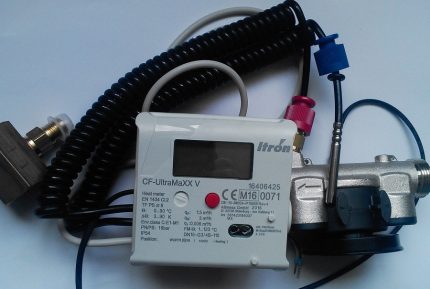
Over 10 versions of ultrasonic flow meters are available - frequency, Doppler, correlation, etc. In addition to performing the main tasks, an ultrasonic heat meter may have a function for adjusting the flow of coolant.
Advantages of ultrasonic heat meters for apartments:
- low price in the basic configuration - from 8000 rubles. (domestic models);
- data on heat consumption are called up on the LCD display by pressing a single button, which is convenient;
- the operation of the device does not cause an increase in hydraulic pressure in the heating system;
The strengths include a long service life of more than 10 years (verification is necessary every 4 years) and power from the built-in battery.
The main disadvantage of ultrasonic heat meters is their sensitivity to the composition of the coolant. If it contains air bubbles and mud particles (scale, scale, etc.), the readings of the device will be incorrect, and in the direction of increasing heat consumption.
For ultrasonic flow meters, there is one installation rule - the pipeline section in front of and after the device must be straight (the required total length of the straight section is more than a meter). Then the meter will provide the correct heat consumption data.
Type # 3 - calculator and heat distributor
These devices measure the relative costs of thermal energy. They have a thermal adapter and two temperature sensors in their design.
Every three minutes, the sensors measure the temperature on the surface of the heating radiator and in the room atmosphere, determining the difference. The collected information on heat consumption is summarized and displayed on the device screen.
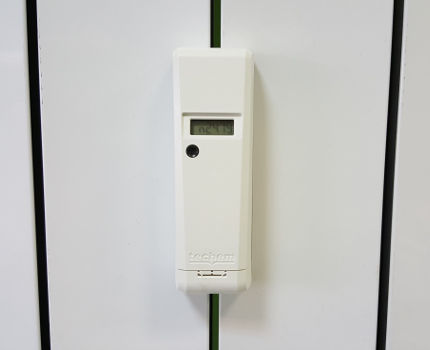
Heat meters are programmed to work on a particular type of heating radiator at the time of installation on it.
All the necessary coefficients and power indicators of the radiator are stored in the counter memory, which allows it to display data on the heat consumption in kilowatt hours.
The numbers indicated by the heat distributors are displayed in arbitrary units. To convert them to kilowatt-hours, multiply the value of the readings by the nameplate power of the heating radiator and the coefficient corresponding to the type of heating battery.
The coefficient numbers are provided by the manufacturer of the meter according to the results of laboratory tests.
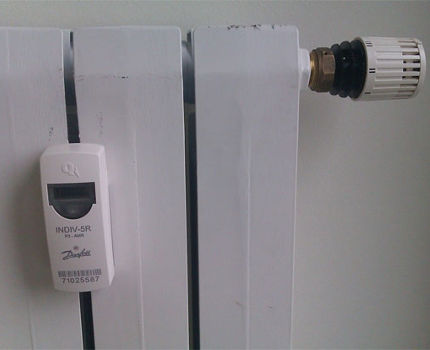
Heat calculators and distributors are placed for measuring thermal energy on one heating radiator. Those.in an apartment where heating is monitored by such devices, there should be as many meters as there are heating radiators.
Both types of meters are effective regardless of the layout of the apartment heating and the operating characteristics of the coolant used in the heating circuit.
Advantages of heat distributors and calculators:
- the cost of about 2000-2500 rubles. - i.e. their installation is advantageous in small apartments equipped with five heating radiators or less (but more than 2);
- long service life without verification - 10 years;
- simple and quick installation on or near the radiator casing;
- data transfer from several heat meters over the air to a single controller that summarizes them (the availability of a radio module depends on the model of the device);
A convincing argument in favor of installing such devices is the complete independence of the measurement results from the quality of the coolant.
Cons of apartment computers and heat distributors:
- the relative measurement error is up to 7-12% (the largest error is characteristic of heat distributors), which is higher than that of "mortise" heat meters;
- energy consumption data is correct if calculated from the results of measurements of several devices within the apartment. One computer is not able to correctly determine the heat consumption of the atmosphere from one radiator. A summary of several instruments is needed;
- effective work only on factory models of heating radiators. Those. Any modifications to the factory equipment of the radiator when measuring heat with such heat meters are unacceptable.
The mounting kit for installing the calculator or heat distributor is selected by the type of radiator on which the meter will be installed.
Handicraft methods for installing a counter will degrade the quality of data collection. If there is no specialized installation kit, it is more rational to fix the device next to the battery it serves.
The legal installation of the heat meter
The sequence of actions aimed at installing an individual metering device for thermal energy in an apartment consists of several stages.
Let's consider them in more detail:
- Written appeal to the house management organization for permission to install a heat meter. The letter must be accompanied by copies of documents on the right of ownership of the living space, technical passport of the apartment.
- Obtaining technical conditions to install a heat meter from a heat supplier (usually from a management company).
- Project preparation individual heat metering and installation technical documentation. It is carried out by an organization that has the legal right to provide design services.
- Coordination of design documentation with a heat supply company.
It is not necessary to purchase a heat meter before receiving an agreed heat energy project, because Failure is possible for various reasons.
Having all the documentation for the project, it remains to choose a heat meter - an ultrasonic, mechanical or external installation, for example, a heat calculator.
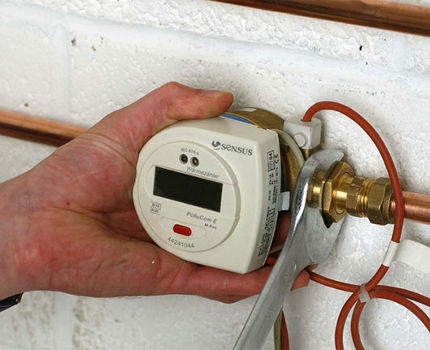
For the purchased model, it is necessary to obtain checks from the seller (commodity and cash), instructions, warranty card and a copy of the current quality certificate.
The company installing the heat meter must be licensed for this type of work.
Before choosing a contractor, it is necessary to evaluate the data on the candidates (USRLE, certificates, SRO approvals), the professionalism of the installers (special equipment, the list of installation works, the availability of the installation kit), guarantees of the work performed.

Please note that in addition to the heat meter, additional devices and devices will be needed: bypass, radiator thermostats, pipe filters, tees, etc.
Sealing a heat meter or heat distributor after installation is mandatory.
Seals put by representatives of the heat supply company.
When is installation impossible or disadvantageous?
The installation of an individual heat meter will be refused by the management company if there is no multi-storey building common house heat meter. To calculate the coefficient for ODN, you need to know the heat consumption of the whole house.
Payments on the heat meter in the following situations will be higher than without it:
- input of the heat main into a multi-storey building is made according to an outdated scheme - through an elevator;
- the apartment is located at the end of the house, on the top or first floors;
- there are cracks in the window frames, in the box of the front door;
- the loggia (balcony) is not glazed - in such a situation it can help balcony insulation;
- purged entrance room (broken windows, ajar access door), etc.
Note that to minimize the cost of thermal energy, it is not enough to install a common house and apartment meter. Modernization of the heating system of the building is necessary - replacement of the elevator unit with AITP or AUU.
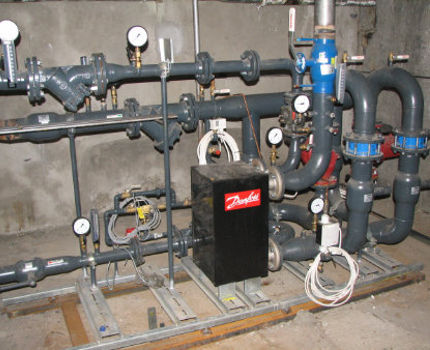
Only in such an energy system of high-rise buildings will it be possible to achieve comfort in apartments with minimal payments for heating.
Conclusions and useful video on the topic
Installing a heat meter is a requirement of the legislation of the Russian Federation. But this norm does not apply to apartments in high-rise buildings.
The reasons why there may be problems with individual heat meters are discussed in this video:
A Petersburger installed heat calculators on radiators in his apartment in 2013 and was convinced of a 30% overpayment for heating.
But ZhSK-3 is in no hurry to compensate for its costs. Watch the video:
Legislation requires equipping a heating system in a high-rise building with a home meter, but only general (for the whole house).
And to managers of multi-apartment households individual meters are advantageous in the only case - if the house is new or reconstructed (heat-insulated) according to modern standards.
Have you installed a heating meter for yourself or do you have valuable information on this issue that may be useful to our other readers?
Perhaps your experience will help solve a difficult situation or inspire you to actively fight with a heat supply company. Share your story or ask questions on this topic - leave your comments under this article.

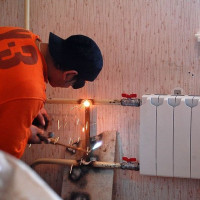 Individual heating in the apartment: the best options for an apartment building
Individual heating in the apartment: the best options for an apartment building 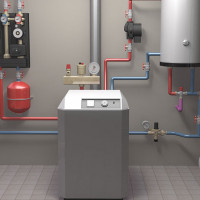 Economical heating of a private house: choosing the most economical heating system
Economical heating of a private house: choosing the most economical heating system 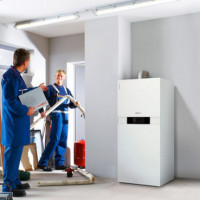 Autonomous heating in the apartment: a comparison of various options for the arrangement
Autonomous heating in the apartment: a comparison of various options for the arrangement 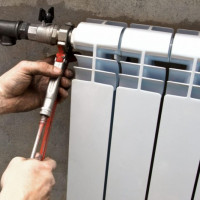 Do-it-yourself economical garage heating: how to reduce heat loss and the better it is heated
Do-it-yourself economical garage heating: how to reduce heat loss and the better it is heated 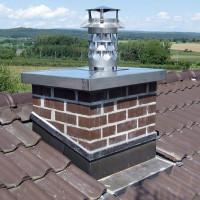 How to put a deflector on a chimney with your own hands: step-by-step instruction
How to put a deflector on a chimney with your own hands: step-by-step instruction 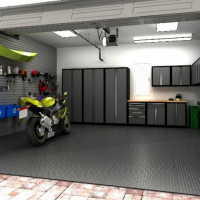 How to better organize garage heating: a comparative overview of the best ways
How to better organize garage heating: a comparative overview of the best ways  How much does it cost to connect gas to a private house: the price of organizing gas supply
How much does it cost to connect gas to a private house: the price of organizing gas supply  The best washing machines with dryer: model rating and customer tips
The best washing machines with dryer: model rating and customer tips  What is the color temperature of light and the nuances of choosing the temperature of the lamps to suit your needs
What is the color temperature of light and the nuances of choosing the temperature of the lamps to suit your needs  Replacement of a geyser in an apartment: replacement paperwork + basic norms and requirements
Replacement of a geyser in an apartment: replacement paperwork + basic norms and requirements
Just the question arose of installing a meter for heating. In the apartment in which we now live, the vertical layout of the heating system is drowned heavily, and you have to open the windows, and the heat bills come in huge. Recently bought an apartment, half of the house has already surrendered, and ours only six months later. There is a horizontal wiring of heating and we want to immediately put the meter on the heat. I don’t want to pay for the heat released through the window, but I’m afraid the Criminal Code will not give permission for some made-up reason.
Lovista, apply for housing, do not be afraid. Then pass the documents to the court, and you will be right. But it’s better that you have more neighbors. But there is a saving, from my own experience I know. The main thing is patience.
Vasily, what 30% are we talking about? Do not mislead people, in order to save at least a little, you need at least: automation in t \ y, warm walls, PVC windows. I am silent about the 75% agreement of neighbors and thermostats. Who needs your IPU in a single apartment?
Hello. Temperature norms exist both in the lower and upper limits. It doesn’t matter what kind of wiring they have there, you could well file a complaint if you have exceeded them.
As for doubts about the permission for the meter in the horizontal layout - you have full rights to the IPU, demand permission, justify it by the fact that the Federal Law of the Russian Federation of November 23, 2009 N 261-ФЗ requires all homeowners to establish by 01.01.2012 both common house energy meters and apartment meters for water, electricity, gas, and, if technically feasible, apartment heat meters.
I was also touched by the question of this topic. Recently we completed the construction and decoration of a private house for a family, and now it came to the installation of individual heating meters in the house. The structure and sequence of actions in the installation of meters are described in many places, but we nevertheless turned to specialists and dispensed with amateur performances.
I live in an apartment building. The house is brick built, and for most of the heating season, the batteries in the apartment are turned off because it is warm and without heating. Question: when the battery in the apartment is cold, then the readings will be zero, respectively, the payment in this period is 0?
Eugene, if the batteries are cold, respectively, you do not pay for the heating operation. But the movement of a cold coolant mechanical meter will still record and count the payment.
If the batteries are cold, you do not pay for heating the apartment, for some reason you are silent about paying for ONE. What kind of cold coolant movement do you write about in a disconnected radiator, where there is no circulation?
Hello. The meter for heating does not count the amount of heat transfer fluid, but the supplied resource. The only problem with summer payment is if the meter does not function due to reasons such as expired, deteriorated, seals broken, and so on. Then the homeowner can be pulled by the standard at any time of the year.
Good evening! Tell me, is it possible to install individual heating meters on a vertical heating system? I have 6 drains in my apartment, and in general, I have individual heating. Maybe you can pay by the counters, and not the whole amount for central heating. Now the heating system has such a practice: you do not have heating, but pay. Thank.
According to the regulation of the RFPF number 1708, meters for measuring thermal energy can now be installed in any apartment. The Regulation entered into force on December 28, 2018. Meters are mounted on both vertical and horizontal heating systems.
On horizontal heating circuits, the meter is mounted on the supply line, and the return pipe is equipped with a three-way valve with a temperature sensor.
In our apartments, mainly heating is arranged with the upper wiring, i.e. the coolant enters the radiators along the vertical risers. In this case, a heat meter is installed on each device, which is programmed for this particular radiator.
Good afternoon. Just talked to my UK. The chief engineer said that in order to receive testimonies on IPA (heat meters), it is necessary that all apartments of an apartment building be equipped with them. I will not be billed individually. At the same time, the house is equipped with a collective metering device (own substation). Is it so? Or get an official refusal and sue? Thank.
Hello. I will quote the norm - Decree of the Government of the Russian Federation of 05.06.2011 N 354 (as amended on 05/22/2019) “On the provision of utilities to owners and users of premises in apartment buildings and residential buildings”:
“VI. The procedure for calculating and paying utility bills:
3 (1). The amount of the payment for utility services for heating in the ith residential or non-residential building in an apartment building that is equipped with a collective (common house) meter for thermal energy and in which at least one, but not all residential and non-residential premises are equipped with individual and (or) common (apartment) heat energy meters, according to paragraphs 42 (1) and 43 of the Rules, is determined by the formula: (see attached image).
Where:
Vi - the volume (amount) of heat energy consumed during the billing period that falls on the i-th room (residential or non-residential) in an apartment building and determined in the i-th room (residential or non-residential) equipped with an individual and (or) common (apartment) metering devices, when paying for utility heating services during the heating period on the basis of indications of an individual and (or) common (apartment) metering device, when paying evenly during the calendar year - based on the average monthly heat consumption energy for heating, obtained on the basis of the testimony of an individual and (or) common (apartment) metering device for the previous year, and in the i-th room (residential or non-residential) in an apartment building not equipped with individual and (or) common (apartment) metering devices, - based on the area of such a room according to formula 3 (7);
Si - the total area of the i-th room (residential or non-residential) in an apartment building;
Vd - the volume (amount) of thermal energy consumed during the billing period in the apartment building, determined when paying for utility heating services during the heating period on the basis of the testimony of a collective (common house) meter of thermal energy, and if paid evenly during the calendar year, based on from the average monthly volume of thermal energy consumption for heating in an apartment building based on the testimony of a collective (common house) meter of thermal energy for the previous ;
SOB - the total area of all residential and non-residential premises in an apartment building;
TT - tariff (price) for thermal energy established (determined) in accordance with the legislation of the Russian Federation.
“.And take an interest in the Criminal Code, in honor of which they approved the installation of the meter and put it into operation if they did not plan to take it into account?
Good afternoon. Such a question, I live in an apartment building, there is a common house heat meter, can I put individual heat meters in my apartment alone? How to do it? Who should be agreed with? In general, is there such an opportunity or is it necessary that all apartments put individual heat meters?
Federal Law of the Russian Federation of November 23, 2009 N 261-ФЗ requires all homeowners to install both common house energy meters and apartment meters for water, electricity, gas, and, if technically possible, apartment heat meters .
Decree of the Government of the Russian Federation of 05.06.2011 N 354 (as amended on 05/22/2019) “On the provision of utilities to owners and users of premises in apartment buildings and residential buildings”:
“Consumer rights and obligations:
h) decide on the installation of an individual, general (apartment) or indoor metering device that meets the requirements of the legislation of the Russian Federation on ensuring the uniformity of measurements, including metering devices, the functionality of which allows you to determine the amount of consumed communal resources differentially by time of day or other criteria , reflecting the degree of utilization of communal resources, even if such an individual or common (apartment) metering device is functional it differs from the collective (common house) metering device with which the apartment building is equipped, and to apply for the installation of such metering device to persons carrying out the corresponding type of activity
“.Approval Procedure:
1. Write a statement to the Criminal Code for the act of examining the technical capabilities of the IPU installation.
2. Select a counter in accordance with the standards and GOST.
3. Contact a specialized company (you can contact the resource supply or the UK if there is a full-time electrician with the appropriate license).
4. Carry out an inspection and measurement certificate for the installation of IPU.
5. Get the installation project.
6. To coordinate the project with the Criminal Code.
7. Install the meter with the help of specialists.
8. Write an application for commissioning and sealing.
Good luck
Good afternoon! I bought an apartment on the ground floor, very cold. The batteries are almost cold, there is not enough pressure in the batteries, they are added only in severe frosts. If you put a heat calculator, then I probably will stop paying for heating. The temperature of the batteries themselves at the entrance is now 22 degrees, and then generally cold. How much should the inlet battery temperature be? Thank.
Hello. Temperature standards for rooms in the MKD are prescribed in GOST R 51617-2000. Housing and communal services. General specifications (with Amendment No. 1) and SNiP 2.08.01. In case of non-compliance, you have the right to file an application for inspection and examination, as well as to file a complaint and demand a recalculation of payment.
Vertical wiring is most optimal for owners. It is convenient to monitor the condition, all is controlled directly in the apartment (as in photo 1).
And horizontal - you pay for the heating of the floors in the entrance and the apartment, i.e. until the heat reaches the battery there will be nothing to warm. Also, access to the ip is located on the floor and it is not possible to identify the ip by apartment, except to believe uk. Also, uk has the practice of dismantling ipu (photo 2), so that payment is on odp.
Hello Andrey. I would like to look at a specific link according to your example. It is not authorized to dismantle the authorized code control unit officially authorized for use. It is interesting to look at the rationale for such a decision.
“As long as the heat reaches the battery there will be nothing to heat” - this is already a question for SNIPs, GOSTs and sanitary standards. There are established rules of temperature standards, their violation is illegal, threatens with sanctions. You just have to fuss once and punish the guilty, so that then all the heating seasons calmly sit in warmth and comfort.
“Also, access to the ip is located on the floor and it is not possible to identify the ip at the apartment, except to believe uk” - IPU is an individual metering device. What does it mean - is on the floor?
Describe in detail what is going on there, maybe we can help with some advice.
Tell me at what distance from the battery should the IPP be installed according to the SNIP in an apartment building with a horizontal wiring?
The corridor is warm, the apartment is cold. We pay for ONE, although there are no batteries in the house and entrances, more precisely, when the house was taken in, the batteries stood, but it was so disguised that when they were removed, the pipes were left without signs of connection! Thank.
Hello. ONE is not only an entrance. SanPiN 2.1.2.2645-10 Sanitary and epidemiological requirements for living conditions in residential buildings and premises (as well as GOST 30494-96. Residential and public buildings. Microclimate parameters in rooms): permissible air temperature in the lobby, on the staircase: 14–20 ° C.
It makes sense to ask the Criminal Code for the torn radiators.
Good afternoon! Tell me, if there is no IPP in our house and the managing company cannot deliver it, because technical conditions do not allow, can I put a heat meter on each battery in my apartment? When communicating with the chief engineer of heating systems, it was said that no, I can’t. In short, as always, we have one task to PAY ...
Hello. Tell me, what specifically motivates the failure of an engineer?
If the house has an ODPU (Common House Accounting Device), then there is NO SENSE to put an individual from 2018, now:
- who has a counter in the apartment (IPU) - they pay on the counter;
- those who don’t have a meter are paid as average owners of meters, just don’t have to spend money on installing a meter and you can spend as much heat as you like.
Formula 3 (7) in the Decree of the Government of the Russian Federation of 05.06.2011 No. 354.
Sergey, how will you say it when you have a flow temperature of 22 degrees, as in the comments above? You can spend as much heat as cold water, and pay as an average owner.
Do you understand what this is about? IPU always calculates the heat consumption in the apartment, and only it, and not averaged over for such tricky ones as you 🙂 Therefore, there is no point only for “not very wise” people who are ready to open all the windows open, if only a neighbor paid for it 🙂
Good evening! The problem is not new but still: we live in a five-story apartment building, a corner apartment on the fifth floor, but everything would have been okay if it had not been for the actions of the HOA chairman to constantly limit the supply of heat to the house. You see, they are being asked by tenants whose apartments are hot and have a desire to save. Maybe it’s hot in them, but we pay for compliance with the standard 18 0С 20 0С in the corner at which the walls are covered with mold, the air simply does not dry out. We can’t help breathing, not cooking, not washing, and why should we pay for batteries with a temperature of 30 C - from a person and then there is more heat than from such a radiator.
We rightly assume that all our possible appeals and complaints will end up in compliance with that same standard, although today we purchased a psychrometer that recorded the humidity in the corner room up to 73%!
We pay for what we don’t get - save on us. We are flooded with a heater, although for what reason ... Tales about problems in the heating system and “furious” attempts to solve them by the head of the HOA were tired, because they are not there, there is only tyranny (I measure the battery temperature at 11.00 - 46 C, in the evening I hardly barely 30 C). Perhaps, as a result, we will be forced to dwell on the version of the IPU installation, but they say there are cases of refusal to seal them, because they begin to take into account at a temperature of a coolant of 40 C (this would suit us if only to stop this disgrace).
Maybe someone came across? And can you also recommend a model of IPU?
Hello. Have you measured the temperature of radiators on the lower floors? Here, in general, it is necessary to call specialists and check the heating system for illegal connections (for example, underfloor heating), airing or clogging of the system. Perhaps the reason is simply that they are really hot?
If the residents simply want to save money - this is also not a reason to limit the supply of heat. There are NORMS and they are within the framework of the LAW (you yourself know about this). And not one of your neighbors has the right to infringe your interests in this case. Let them install IPUs, what have you got to do with it?
There is no need to come up with IPUs, not IPUs, here you need to solve the issue with what you pay for. A complaint to the Housing Inspectorate should give the proper result and a little cure your incompetent chairman of the HOA.
And here, in the Crimea, they pay all 12 months. Explaining this by the fact that they try for us. They scatter them for the whole year, so that they pay less per month. Disconnect from the heating do not give. Even in Ukraine, a resolution was adopted on the ban on disconnecting from heating. And the hot water in Alushta has not been provided with a heating system for 15 years already.
And we stopped in an apartment in which the batteries are already equipped with heat controllers. But we rarely turn them on, it's hot. And we pay as everyone, per sq.m.
If there is a heat regulator on the battery, then we can install a meter for the consumption of this heat, and will they charge a fee for it?
There are no batteries at all.